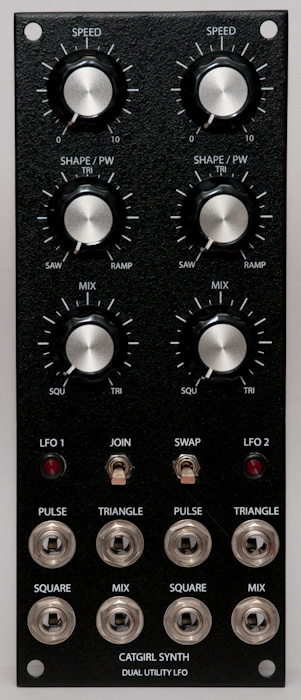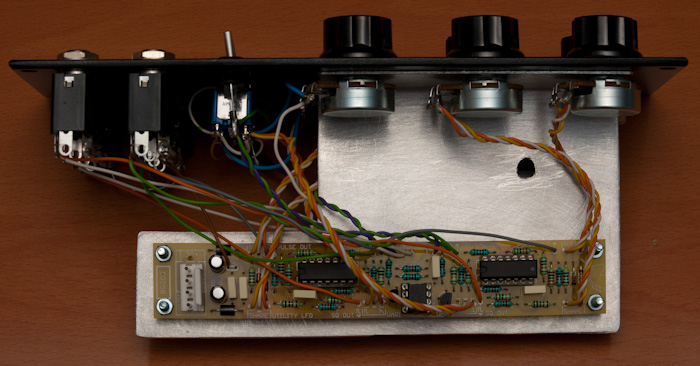CGS Analog Computer
This is a great module, very useful in combination with sequencers. It consists of:
– CGS34 Analog Shift Register
– CGS36 Pulse Divider and Boolean Logic (2 inverters, AND and OR function)
– CGS54 XOR and XNOR function
– CGS56 Gate Converter

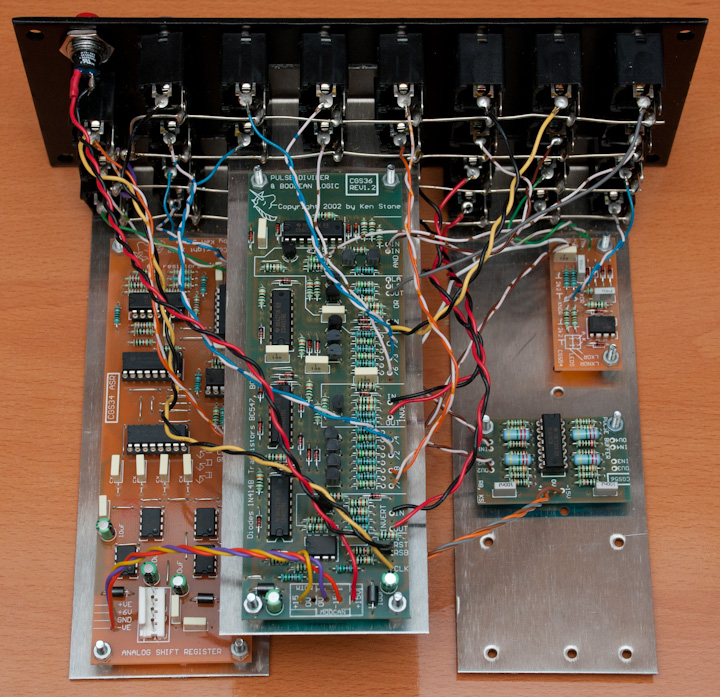
CGS/Bridechamber Wave Multipliers
Another great module, it contains a ring modulator and 3 wave folders (a Serge-like Wave Folder, a Lockhart “Nonselective Frequency Tripler” and a simple multiplier). I really like this module as it is capable of some very diverse and interesting timbres.
More information about this module can be found at the BrideChamber website and the CGS website.
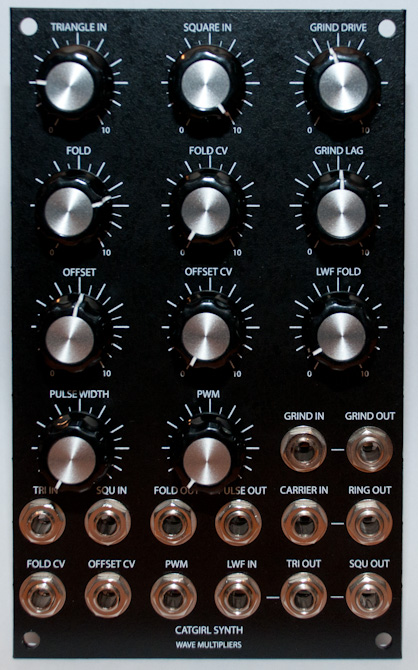
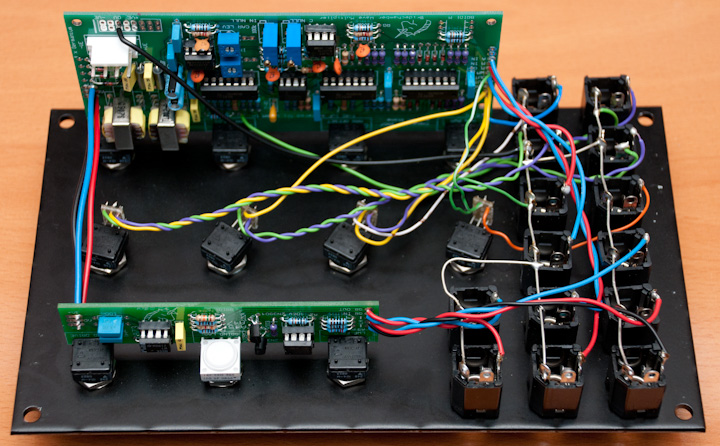
Here are a few oscilloscope screenshots I made to show you what this module is capable of. The green signal on top is the input signal, the yellow one below is the output signal from the module.
The Serge-like wavefolder with a triangle input signal.
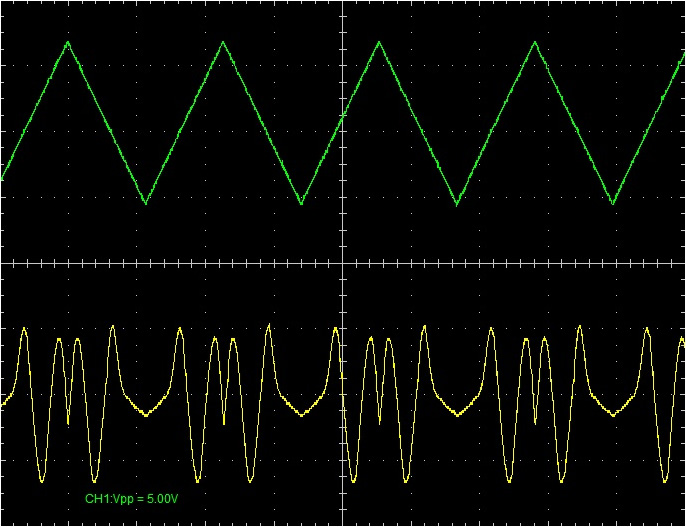
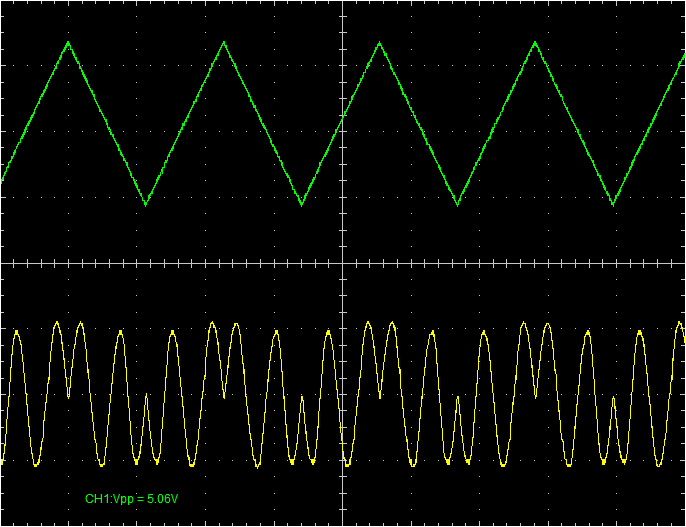
The Serge-like wavefolder with a square input signal.
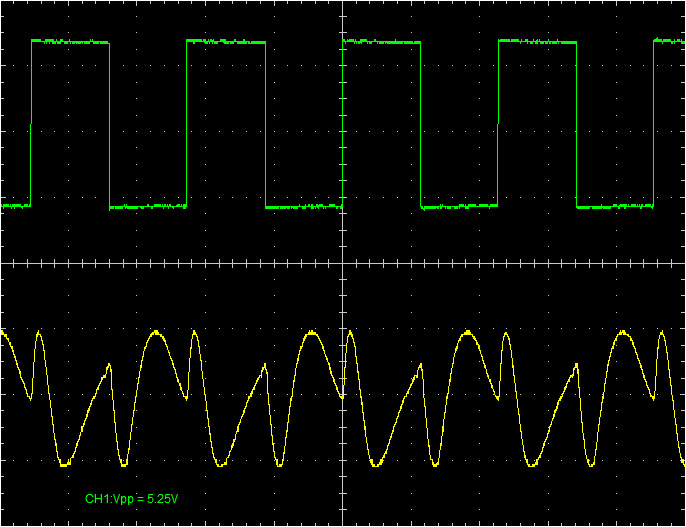
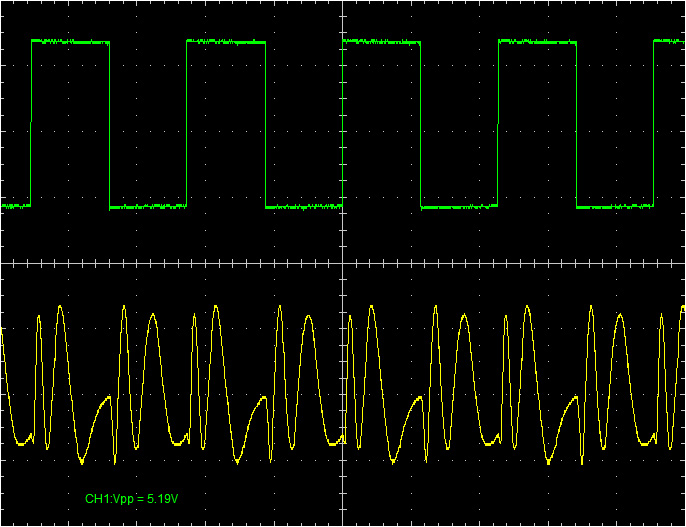
Grinder with triangle input signal
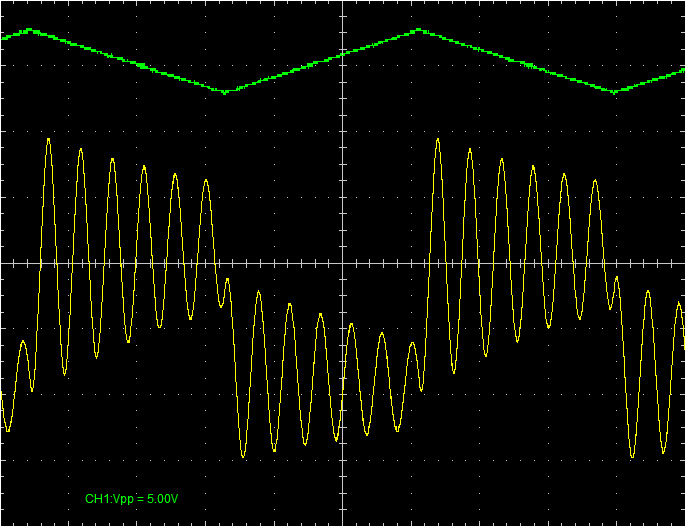
Grinder with square input signal
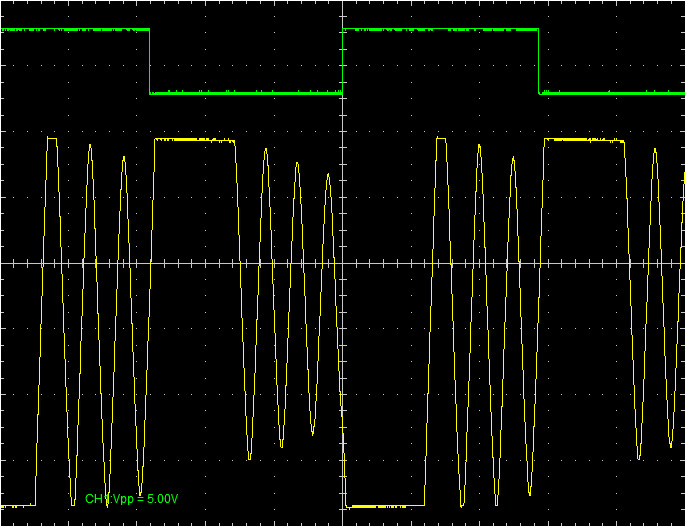
Lockhart wavefolder, triangle output
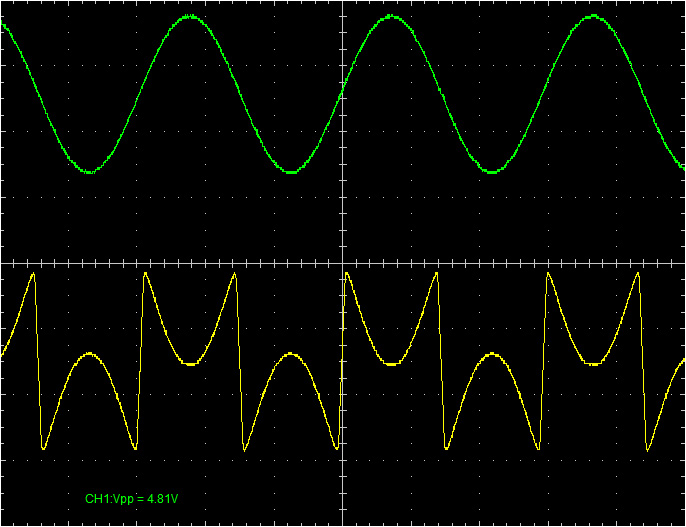
Lockhart wavefolder, square output
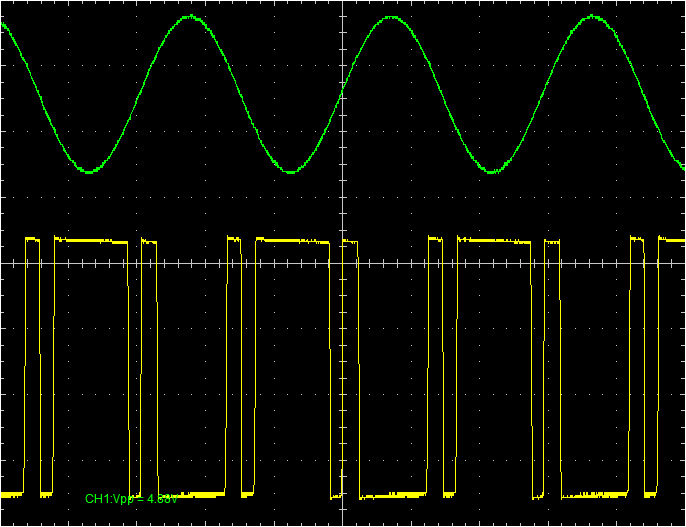
Ring modulator with sine input signal and the Serge wavefolder output as the carrier signal
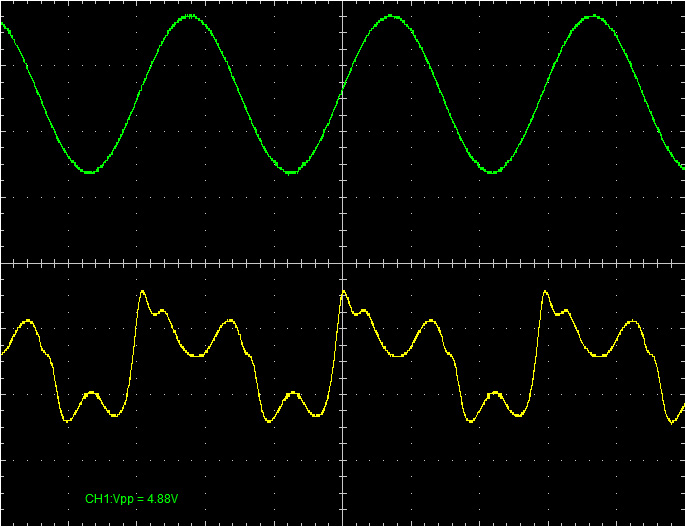
CGS Dual Utility LFO
These LFO’s are different from most other LFO’s. Speed and shape (falling ramp, to triangle to rising ramp and length of it output puls) can be adjusted.
Using the Bridechamber front panel the JOIN switch interconnects the two MIX outputs by swapping their ramp outputs with each other, so that each output is a combination of that LFO’s square wave with the other’s ramp. The SWAP switch reverses the outputs of the second LFO so that (when JOIN is on) one MIX output is a combination of both square waves while the other is a combination of both ramps. When JOIN is off, SWAP merely reverses the direction in which the second LFO’s MIX knob works.
